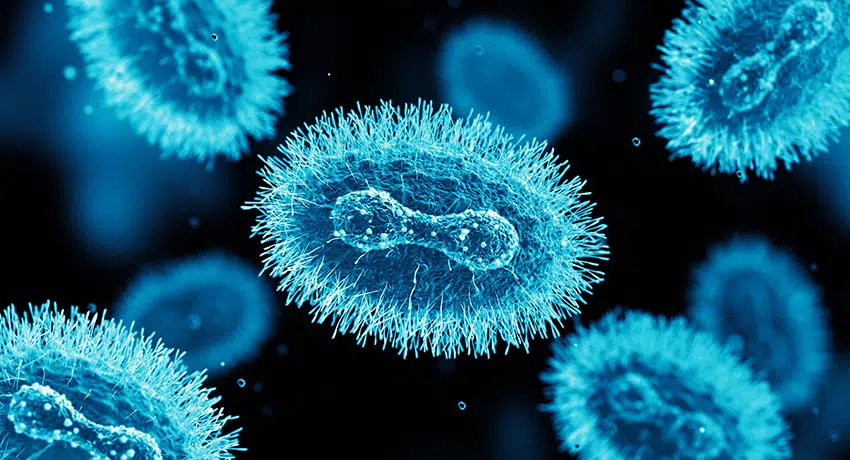Genetics plays a crucial role in many diseases. Depending on the genetic mechanism, human diseases are classified into chromosomal (caused by large chromosomal losses or gains), monogenic (caused by a mutation in a single gene), multifactorial (caused by variants in multiple genes), or disease caused by a combination of gene mutations and environmental factors. For some diseases that are generally rare in the population, phenotypic expression is solely dependent on a particular genotype. But for many others, their clinical presentation is influenced by the interplay between genetic variation and environmental factors, such as nutrition, chemical or radiation exposure, smoking, pollution, or even a viral illness.
The diseases that involve a combination of genetic and environmental exposures are much more common in the general population compared to disorders caused by changes in the DNA only. They are costly to the healthcare system representing a major burden to society and account for nearly 70% of global deaths (1). Common examples include heart disease, diabetes, cancer, asthma, autoimmune diseases, rheumatoid arthritis, hypertension, obesity, schizophrenia, autism and many more (2).
Finding the exact cause of such diseases is often akin to solving a complex equation with hundreds of variables. But this task becomes even more difficult given that the variables often remain unknown. In recent years, tremendous progress has been made in the genomic diagnostics arena with the evolution of sequencing, from short-read to long-read, that now allows the detection of both intronic and exonic DNA variants (3). Yet, understanding the interplay mechanism between genetic and environmental factors continues to be challenging.
It is well known that environmental exposures contribute to various diseases (4). Epidemiological analysis can often establish an associative relationship between exposure to environmental factors and disease pathogenesis. However, quite strikingly not all exposed individuals develop disease and likewise not all individuals who inherited a particular genetic variant develop disease. For the vast majority of diseases, it is apparent that combinations of synergistic or antagonistic factors are important for disease development (5).
One of the interesting examples of non-communicable diseases shaped by the environment which affect nearly 30-40% of the world population is allergies (6). Their incidence continues to increase dramatically all over the world, in both developed and developing countries. Allergic conditions include bronchial asthma, allergic rhinitis, anaphylaxis, drug, food, and insect-venom allergies, eczema, urticaria, and angioedema (7). The first report linking chromosomal region (11q13) and atopy, a genetic tendency to develop allergic diseases such as allergic rhinitis, asthma, and atopic dermatitis, was published in 1989 (8). Since then many more genes have been associated with a range of atopy-related phenotypes (9). These, for example, include the genes that regulate inflammatory responses such as IFN-α or TLR-1, the genes that maintain the vascular endothelium and mucosal lining such as FLG, PLAUR, CTNNA3, PDCH1, or COL29A1, the genes that mediate immune cell function such as IL1RL1, STAT6, or RERE, and those that affect susceptibility to allergic sensitization such as ORMDLR3 and CHI3L1 (10).
Yet, predicting the risk for the development of allergic disease remains a challenge given that the phenotypic response often depends on the environmental cause, the amount of exposure, and individual health. For example, air pollution and low diversity gut microbiome, caused by frequent use of antibiotics early in life, have been associated with an increased risk of pediatric asthma, allergies, and virus-induced wheezing (11). In contrast, individuals growing in family-based farms appear to have protection against asthma and allergies as a result of chronic exposure to farm dust which subsequently promotes a diversity of T-regulatory cells leading to a significantly higher variability in gut and lung microbiome and therefore an increased antimicrobial response (12). Thus, different individuals harbor very different collections of microbes which in turn determine differential susceptibility to allergic diseases.
The past twenty years have been a revolutionary period for personalized genomic medicine, with discoveries of new genes, susceptibility variants, and targeted therapies. Building on this base, researchers are investigating the interplay between personal health and environmental exposures more comprehensively. Although the interaction between human health and various exposures is complex, as human research continues, a better understanding of molecular genetic pathways, the immune system, and environmental factors will have a tremendous impact on complex diseases globally.
- Johansson, Asa, et al. “Precision medicine in complex diseases-Molecular subgrouping for improved prediction and treatment stratification.” Journal of Internal Medicine 294 (2023): 378-396.
- Mitchell Kevin. “What is complex about complex disorders?” Genome Biology 13 (2012): 237.
- Mahmoud, M. et al. “Utility of long-read sequencing for All of Us.” Nature Communications 15 (2024): 837.
- U.S. Environmental Protection Agency. Disease and Conditions. Report on the Environment July 2023. https://www.epa.gov/report-environment/disease-and-conditions
- Virolainen Samuel J, et al. “Gene–environment interactions and their impact on human health.” Genes and Immunity 24 (2023): 1-11.
- American Academy of Allergy Asthma and Immunology. Allergy Statistics. https://www.aaaai.org/about/news/for-media/allergy-statistics
- Gutowska-Ślesik, Joanna et al. “The increase in allergic conditions based on a review of literature.” Postepy Dermatologii and Alergologii 40 (2023): 1-7.
- Cookson, William OCM et al. “Linkage between immunoglobulin E responses underlying asthma and rhinitis and chromosome 11q.” Lancet 1 (1989):1292-1295.
- Holloway John W. “Genetics of allergic disease”. The Journal of Allergy and Clinical Immunology. 125 (2010): S81-94.
- Falcon, Robbi Miguel G and Caoili Salvador Eugenio C. “Immunologic, genetic, and ecological interplay of factors involved in allergic diseases”. Frontiers in Allergy 4 (2023):1215616.
- Smits, Hermelijn H et al. “Childhood allergies and asthma: New insights on environmental exposures and local immunity at the lung barrier”. Current Opinion in Immunology 42 (2016): 41-47.
- Nowarski, Roni et al. “The Stromal Intervention: Regulation of Immunity and Inflammation at the Epithelial-Mesenchymal Barrier”. Cell 168 (2017): 362-375.








